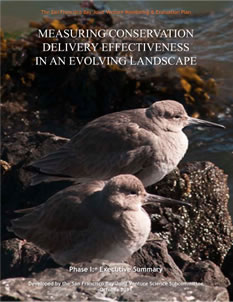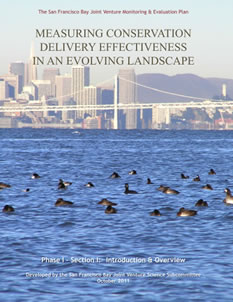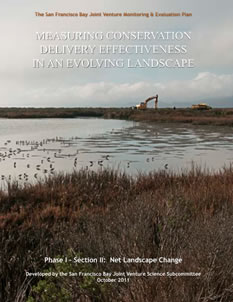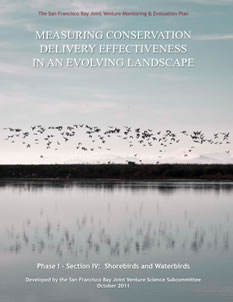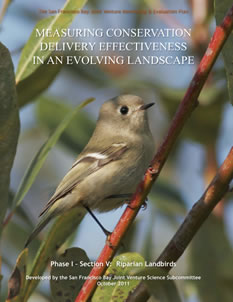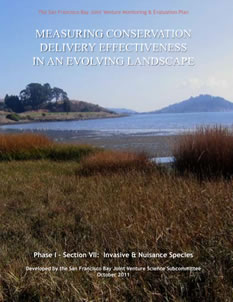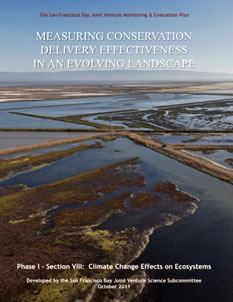Monitoring and Evaluation
The San Francisco Bay Joint Venture (SFBJV) Monitoring and Evaluation Plan (M&E Plan) offers a 20-year region-wide monitoring and research framework to measure the effectiveness of SFBJV partner conservation delivery actions. The implementation of the M&E Plan will benefit and provide information and guidance to the regional SFBJV community, conservation and science partners, regulatory agencies, decision makers and funding institutions.
The M&E Plan will direct the systematic evaluation of the response of conservation targets, such as habitats and species, to SFBJV conservation delivery actions in the context of landscape scale environmental change. The resulting monitoring and research data will provide information upon which to base management, conservation planning, and policy decisions. The resulting data will increase understanding of the effectiveness of SFBJV partner conservation delivery in benefitting wetland habitats and associated target wildlife populations at various scales.
By addressing all North American bird conservation initiatives and regional habitat plans, the M&E Plan presents a first step in attempting to link project, regional, and continental scale assessments. The M&E Plan can serve as the initial force for the integration of efforts among Joint Ventures and partners, and highlights the importance of aligning metrics and methods to increase comparability and scalability across projects, regions and flyways.
Over 70 scientists, resource managers, conservationists and regulators from more than 40 organizations, businesses and agencies have participated in this first phase of the SFBJV M&E planning process. Participants have compiled relevant information and prioritized objectives for focus themes presented in nine independent Plan modules (Executive summary plus sections I to VIII in the document):
Measuring Conservation Delivery Effectiveness in an Evolving Landscape
Each individual M&E Plan section module features priority monitoring and research objectives. Main themes of these priorities include net habitat quantity and connectivity, target population abundance and distribution estimates, vulnerability to invasive and nuisance species, human disturbance, and climate change impacts, as well as regional integration and centralization of data via shared online databases or meta-databases. Each module further provides supporting information on recommended metrics, protocols, key partners, existing programs, and data repositories.
